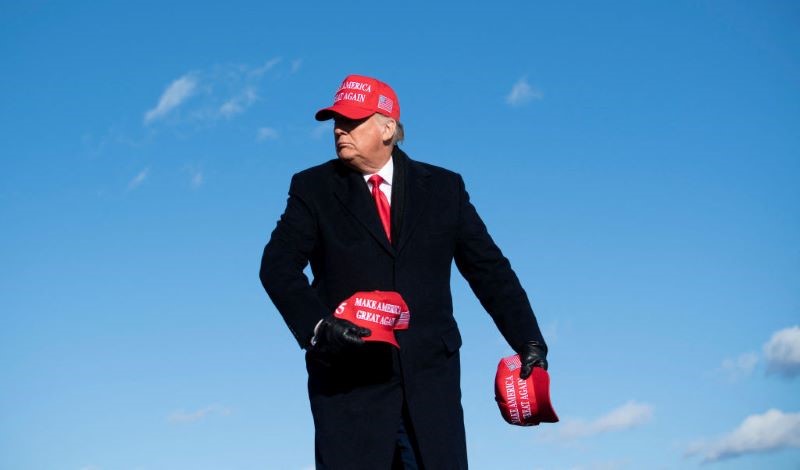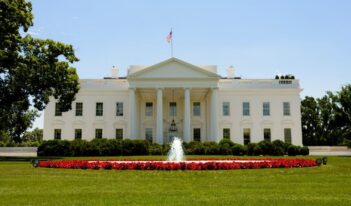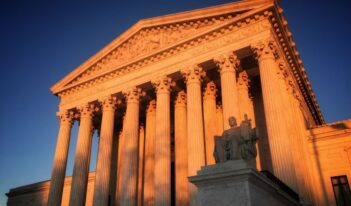
Scholars examine the pace and potential impact of President Trump’s first 100 days.
The first 100 days of a presidency has long served as a window into an administration’s likely achievements. Already, President Donald J. Trump’s second term has been defined by the speed and scope of his use of executive authority. Through his use of executive orders, presidential memoranda, and proclamations, President Trump has signaled his intent to govern by directive—intending to pursue a deregulatory agenda without delay.
As of early May, President Trump has signed 143 executive orders, including those rescinding executive orders issued by President Biden, imposing limitations on the use of DEI programs, withdrawing the United States from the World Health Organization, and reinforcing rights under the Second Amendment. He has revoked the security clearances for lawyers at select law firms and fired numerous agency officials and government employees, including inspectors general overseeing audits at more than half a dozen major departments. He has empowered Elon Musk to spearhead efforts of the Department of Government Efficiency, which has halted or canceled payments on numerous government contracts and effectively hollowed out certain government agencies, such as the U.S. Agency for International Development and the Consumer Financial Protection Bureau. As of May 2025, at least 135 court rulings have halted Administration action.
In the domain of regulatory policy, the Administration has taken numerous government-wide actions to pursue its policy objectives. These actions have included:
- Executive Order 14,192 calling for agencies to identify at least 10 existing regulations or guidance documents to be revoked for every new one to be added;
- Executive Order 14,215 applying the White House regulatory review process to independent agencies; and
- Executive Order 14,219 calling on agencies to revisit their statutory authorizations of existing regulations.
These procedurally oriented orders are in addition to numerous substantive policies and priorities of the Administration that aim to reduce regulatory oversight on matters as varied as climate change, cryptocurrency, and employment discrimination.
All Presidents have used executive authority to advance their agendas. President Trump’s approach, however, is notably more sweeping than that of his predecessors in his Administration’s first 100 days. Legal scholars have criticized the Administration for having bypassed longstanding norms of policymaking, interfered with powers reserved for the U.S. Congress, and taken steps incompatible with foundational rule-of-law principles.
In this series in The Regulatory Review, leading scholars review the substance and pace of President Trump’s executive actions related to regulation and regulatory agencies during the first 100 days of his second term. The essays featured in this series examine key questions raised by some of President Trump’s principal regulatory directives, including their challenges to agency independence, the expansion of presidential control over benefit-cost analysis, and the ideological values driving the Administration’s deregulatory efforts. Together, these scholars offer timely insights into the Administration’s effort to consolidate presidential authority over regulatory policy, sometimes against the grain of longstanding legal and administrative norms.
This series features essays from the following contributors: Susan Dudley of The George Washington Trachtenberg School of Public Policy and Public Administration; Roger Nober of The George Washington Trachtenberg School of Public Policy and Public Administration; Richard J. Pierce, Jr. of The George Washington University Law School; Lisa Robinson of Harvard T.H. Chan School of Public Health; and Rena Steinzor of the University of Maryland Francis King Carey School of Law.
On Direct Exercises of Presidential Power
May 5, 2025 | Richard J. Pierce, Jr., The George Washington University Law School
Myriad questions surround the role of Congress and the Supreme Court in checking presidential power.
Regulatory Benefit-Cost Analysis Under the Trump Administration
May 6, 2025 | Lisa A. Robinson, Harvard T.H. Chan School of Public Health
President Trump’s deregulatory push will strain benefit-cost analysis, raising concerns about quality moving forward.
Amid the Norm Smashing, Some Durability Remains
May 7, 2025 | Susan Dudley, The George Washington Trachtenberg School of Public Policy and Public Administration
President Trump has issued dramatic deregulatory executive orders, but some normalcy remains.
The Man Behind the Trump Deregulatory Throne
May 8, 2025 | Rena Steinzor, University of Maryland Francis King Carey School of Law
Russell Vought’s influence on the second Trump Administration cannot be ignored.
When Is an Independent Agency Independent?
May 8, 2025 | Roger Nober, The George Washington Trachtenberg School of Public Policy and Public Administration
A new executive order may eliminate the independence of independent regulatory agencies.



